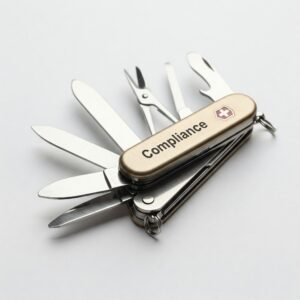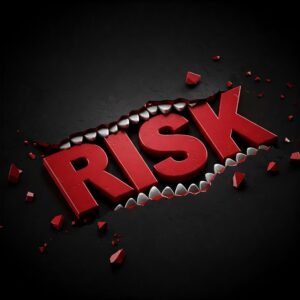In an increasingly complex regulatory landscape, Enhanced Due Diligence (EDD) has become vital for businesses navigating high-risk relationships. EDD takes the standard Customer Due Diligence (CDD) process to a more intensive level, digging deeper to understand the potential risks associated with clients, especially those in high-risk sectors, or located in jurisdictions prone to corruption or lacking robust financial controls. Here are the top 10 essential things to know to manage EDD effectively and safeguard your business from reputational and financial risks.
1. Understand the Difference Between CDD and EDD
Customer Due Diligence (CDD) is typically a more routine process, focusing on verifying a client’s identity, establishing beneficial ownership, and confirming the legitimacy of funds. Enhanced Due Diligence (EDD), on the other hand, requires more comprehensive checks and an in-depth risk assessment. For high-risk clients or those in sensitive sectors, EDD means going beyond basic ID verification. It includes exploring financial history, adverse media coverage, sanctions, political exposure, and deeper scrutiny of beneficial owners. EDD is an investment of time and resources, but it is necessary to uncover hidden risks that CDD might miss.
2. Know the Regulatory Requirements in Your Jurisdiction
EDD standards vary globally, and it’s critical to stay updated on jurisdiction-specific requirements. The U.S., for example, mandates that financial institutions conduct EDD under the Bank Secrecy Act (BSA) and adhere to FinCEN’s guidelines, while the EU has its own stringent mandates, including the 6th Anti-Money Laundering Directive (AMLD6). In Asia, the Financial Action Task Force (FATF) guidelines are widely adopted. For multinational companies, a globally consistent EDD framework ensures compliance, though local adaptations may be required. Familiarity with these regulations not only protects your business but also helps identify red flags when dealing with cross-border clients.
3. Identify High-Risk Industries and Regions
Certain sectors are more prone to financial crime and therefore require additional scrutiny. High-risk industries such as real estate, cryptocurrency, gaming, precious metals, and financial services have unique vulnerabilities. Additionally, regions with weak regulatory oversight, high levels of corruption, or a history of sanctions—like certain parts of Eastern Europe, the Middle East, and Central America—warrant a higher level of vigilance. By conducting a preliminary risk assessment, you can prioritize EDD resources toward clients operating in these sectors or regions.
4. Recognize the Role of Beneficial Ownership in EDD
One of the most critical tasks in EDD is understanding beneficial ownership. Often, high-risk clients hide their involvement behind complex ownership structures to mask illegal activities. Verifying who truly controls a company is crucial, especially when dealing with potential shell companies or those with opaque ownership structures. Countries worldwide are moving toward mandatory disclosure of beneficial owners, but enforcement varies. Your EDD process should prioritize uncovering the ultimate beneficial owners (UBOs) to mitigate risk associated with shell companies, trusts, or corporate veils.
5. Incorporate Media and Adverse Information Searches
Adverse media screening and open-source intelligence (OSINT) are essential parts of EDD, revealing potentially damaging information that may not surface in standard background checks. Negative news, legal issues, or even social media posts can highlight red flags, such as previous fraud charges, regulatory violations, or connections to crime syndicates. Automated AI solutions can help with this process, rapidly identifying negative information from credible sources across various media channels. However, always assess the credibility and relevance of sources to avoid acting on misleading information.
6. Use Artificial Intelligence (AI) and Machine Learning for Efficiency
With the vast data required for thorough EDD, automation via AI and machine learning is a game-changer. AI-powered tools enhance EDD by detecting unusual patterns in transactions, identifying subtle indicators of risk, and aggregating global data points for a faster, more efficient review. Machine learning models can be trained to recognize emerging risks or anomalies, significantly reducing the time needed to assess high-risk clients. Yet, human oversight remains essential, especially for interpreting nuances that algorithms may overlook, such as cultural context or industry-specific risk factors.
7. Assess the Client’s Financial Activity and Patterns
Analyzing a client’s financial behavior is integral to EDD. Unusual transaction patterns—such as high-value transfers that don’t align with the client’s profile, frequent transactions with sanctioned countries, or sudden spikes in cash flow—can signal illegal activity, such as money laundering or fraud. When conducting EDD, monitor transaction histories, identify payment patterns, and look for discrepancies that could indicate high-risk behavior. Tools that track and analyze financial patterns can assist with detecting irregularities in real time, helping you stay ahead of evolving risks.
8. Create a Robust Documentation Process
Documenting each step of the EDD process is critical for transparency and accountability. A well-documented EDD process provides a clear trail for internal reviews, regulatory audits, and potential investigations. Every action taken, from identifying high-risk clients to investigating adverse information, should be carefully recorded. This documentation can also demonstrate to regulators that due diligence was thoroughly conducted, which is vital in the event of legal or compliance scrutiny. Establish a standardized process for tracking EDD findings, decision-making criteria, and any follow-up actions.
9. Involve Cross-Functional Teams for Comprehensive Risk Analysis
EDD is a multi-faceted process that benefits from insights across departments. Risk management, compliance, legal, and even data science teams bring unique perspectives, strengthening your ability to identify risks holistically. Cross-functional collaboration ensures that no single department bears the burden of responsibility and enables a more well-rounded approach. For example, a data team can assist with analyzing large datasets, while the legal team ensures adherence to relevant regulations. This approach fosters a culture of compliance across the organization, supporting more thorough and accurate risk assessments.
10. Prepare for Continuous Monitoring and Dynamic Risk Profiles
EDD is not a one-time task but an ongoing responsibility. Clients, industries, and regions evolve, and so do the risks they present. Continuous monitoring is essential for keeping high-risk client profiles updated and ensuring real-time responsiveness to changes in risk status. For example, if a client’s beneficial owner is suddenly implicated in financial crime, continuous monitoring systems should alert you to these developments. AI and machine learning tools can automate alerts and flag adverse media mentions, sanctions, or regulatory changes that affect risk profiles. Regular refreshes of EDD data can ensure that you’re always working with the most current information.
Conclusion
Enhanced Due Diligence is an investment in risk mitigation that pays dividends in protecting your organization from potential legal and financial fallout. It enables you to build safer, more transparent relationships and insulates your company from potential threats that may jeopardize its reputation or standing in the industry.
From identifying high-risk entities to staying current with global regulations, these ten elements lay the groundwork for a comprehensive EDD process. Leveraging technology, adopting a cross-functional approach, and maintaining robust documentation and monitoring practices are critical for a successful EDD strategy. By embedding these practices, you’re positioning your organization to navigate the complex landscape of financial crime prevention with resilience and confidence.







